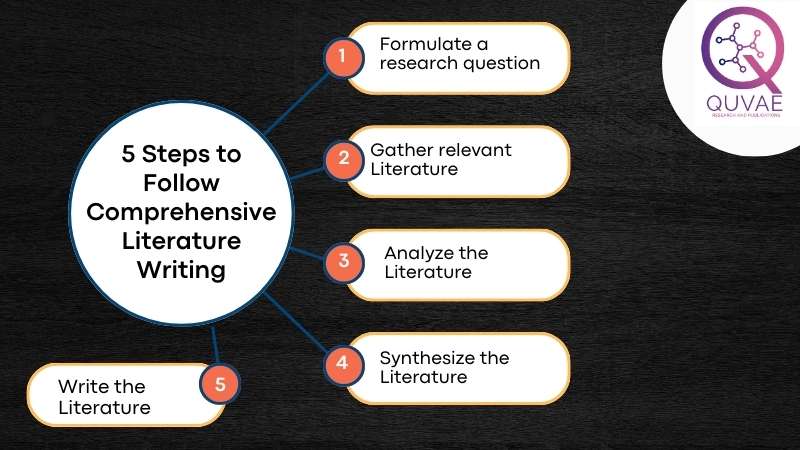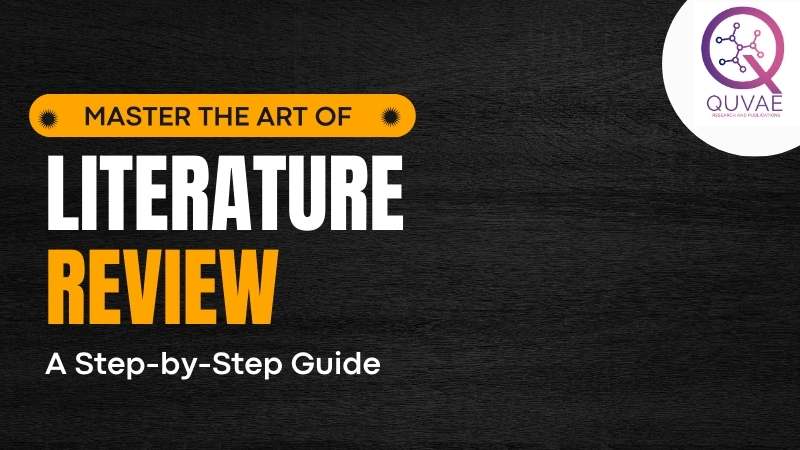A comprehensive literature review is a critical aspect of any research manuscript. It provides a summary and analysis of the existing literature on a particular topic, helping to identify gaps in knowledge, unresolved issues, and challenges that need to be addressed. Writing a comprehensive literature review requires careful planning, attention to detail, and a systematic approach. In this article, we will provide a guide to writing a comprehensive literature review for a research manuscript for the help of guide to writing a comprehensive literature review for research papers.

Step 1: Define the Research Question
The first step in writing a comprehensive literature review is to define the research question. The research question is the central question the literature review seeks to answer. It should be specific, clear, and focused. The research question should also be relevant to the field of study and should contribute to the existing knowledge.
Step 2: Search and Select Relevant Literature
Once the research question has been defined, the next step is to search for and select relevant literature. The literature search should be comprehensive and systematic. It should include a variety of sources, such as academic journals, books, and conference papers. The selection of literature should be based on relevance and quality. The literature should be directly related to the research question and should provide valuable insights into the topic.
Step 3: Read and Analyze the Literature
After selecting the relevant literature, the next step is to read and analyze it. The literature should be carefully examined, and key themes and findings should be identified. The analysis should be systematic and should focus on the research question. The literature should be critically evaluated, and any flaws or limitations should be identified.
Step 4: Organize and Synthesize the Literature
Once the literature has been analyzed, the next step is to organize and synthesize it. The literature should be organized into themes and sub-themes, and the key findings should be summarized. The literature should be synthesized to provide a comprehensive overview of the existing knowledge on the topic. The synthesis should highlight the similarities and differences between the studies and identify gaps in the literature.
Step 5: Write the Literature Review
The final step in writing a comprehensive literature review is to write the review. The review should be structured and well-organized. It should include an introduction, a main body, and a conclusion. The introduction should provide an overview of the research question and the purpose of the literature review. The main body should include the themes and sub-themes identified in the literature analysis. How to avoid plagiarism in research paper will help to know your quality and proofreading of the papers. The conclusion should summarize the key findings and the implications for future research.
In conclusion, writing a comprehensive literature review requires careful planning, attention to detail, and a systematic approach. The literature review should be comprehensive and systematic and based on a well-defined research question. The literature should be critically evaluated, and the findings should be synthesized to provide a comprehensive overview of the existing knowledge on the topic. By following these steps, researchers can produce a high-quality literature review that contributes to existing knowledge and helps identify literature gaps.

